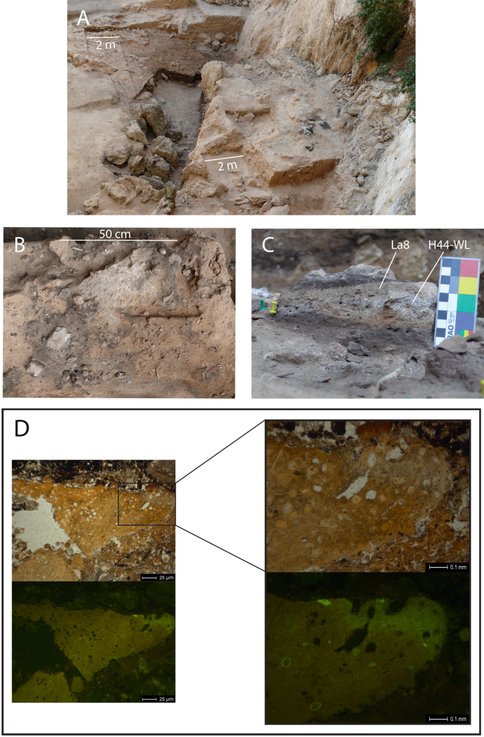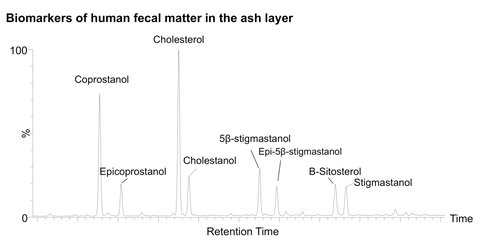2014 Annual Science Report
 Massachusetts Institute of Technology
Reporting | SEP 2013 – DEC 2014
Massachusetts Institute of Technology
Reporting | SEP 2013 – DEC 2014
Early Animals: The Role of Biosignatures in Illuminating Homonin Diet
Project Summary
Work conducted by Ainara Sistiaga, a student visitor from the University of La Laguna, Tenerife, Spain, aimed to evaluate the biomarker methodologies we typically apply to modern and ancient sediments to the issues surrounding the evolution of homo sapiens. Gas chromatography-mass spectrometry data on samples from El Salt (Spain), a Middle Palaeolithic site dating to ca. 50,000 yr. BP, represents the oldest positive identification of human faecal matter. We showed that Neanderthals, like anatomically modern humans, have a high rate of conversion of cholesterol to coprostanol related to the presence of specific gut flora. Analysis of five sediment samples from different occupation floors suggests that Neanderthals predominantly consumed meat, as indicated by high coprostanol proportions, but also had significant plant intake, as shown by the presence of 5β-stigmastanol.
Project Progress
Sterols and human evolution
Work conducted by Ainara Sistiaga, a student visitor from the University of La Laguna, Tenerife, Spain, aimed to evaluate the biomarker methodologies we typically apply to modern and ancient sediments to the issues surrounding the evolution of homosapiens.
Many of the anatomical and physiological changes that shaped human evolution have been closely linked to our tendency to eat more meat, that is, increased intake of protein and fat. Hunting for meat, as well as its consumption, may have played a role in the development our contemporary physique, the development of large brains as well as our extended life spans.
We conducted a study of Neanderthal diet using faecal biomarkers. Gas chromatography-mass spectrometry data on samples from El Salt (Spain), a Middle Palaeolithic site dating to ca. 50,000 yr. BP, represents the oldest positive identification of human faecal matter. We show that Neanderthals, like anatomically modern humans, have a high rate of conversion of cholesterol to coprostanol related to the presence of specific gut flora.
Analysis of five sediment samples from different occupation floors suggests that Neanderthals predominantly consumed meat, as indicated by high coprostanol proportions, but also had significant plant intake, as shown by the presence of 5β-stigmastanol. This study highlights the applicability of the biomarker approach in Pleistocene contexts as a source of direct palaeodietary information and supports the opportunity for further research into cholesterol metabolism throughout human evolution.
Publications
-
Sistiaga, A., Mallol, C., Galván, B., & Summons, R. E. (2014). The Neanderthal Meal: A New Perspective Using Faecal Biomarkers. PLoS ONE, 9(6), e101045. doi:10.1371/journal.pone.0101045
-
PROJECT INVESTIGATORS:
-
PROJECT MEMBERS:
Ainara Sistiaga Gutiérrez
Project Investigator
Bertila Galván
Co-Investigator
Carolina Mallol
Co-Investigator
Roger Summons
Co-Investigator
-
RELATED OBJECTIVES:
Objective 3.2
Origins and evolution of functional biomolecules
Objective 4.2
Production of complex life.

